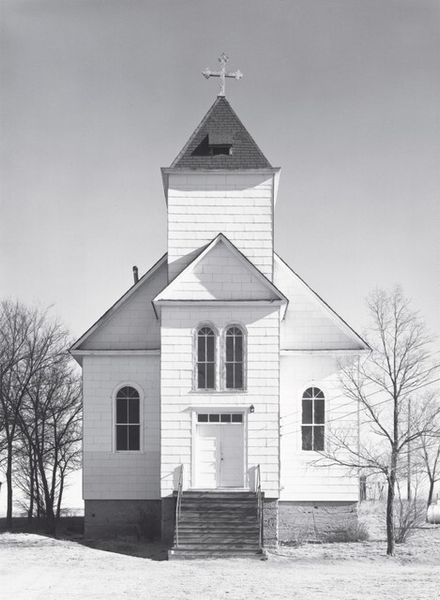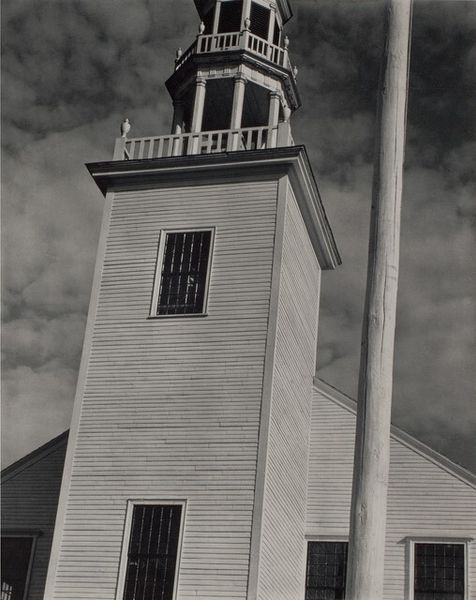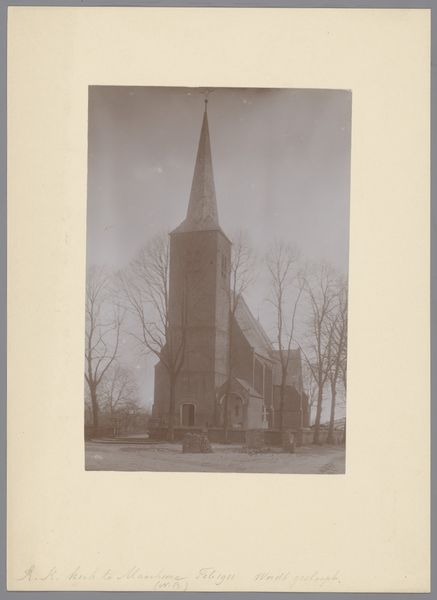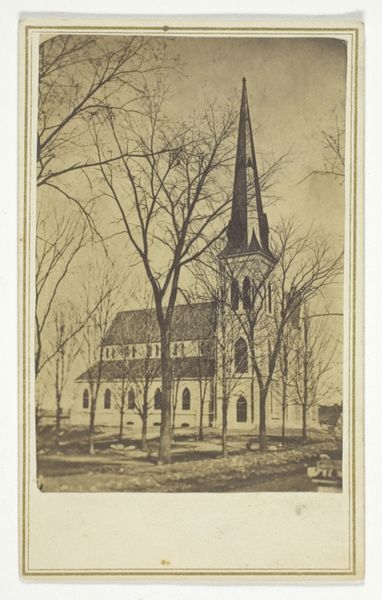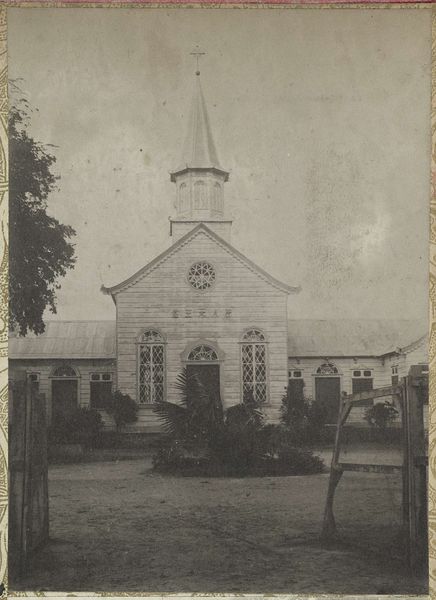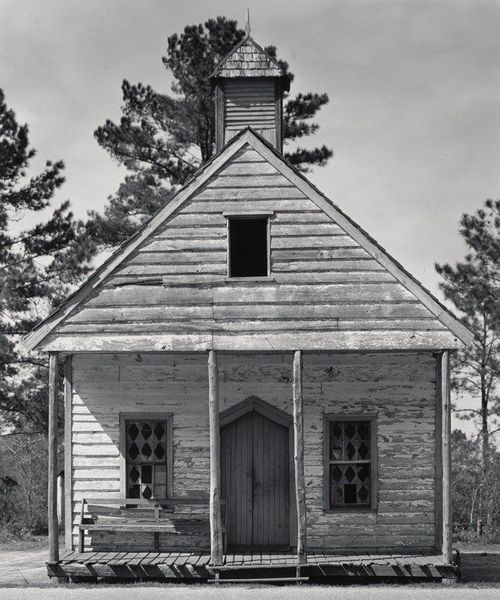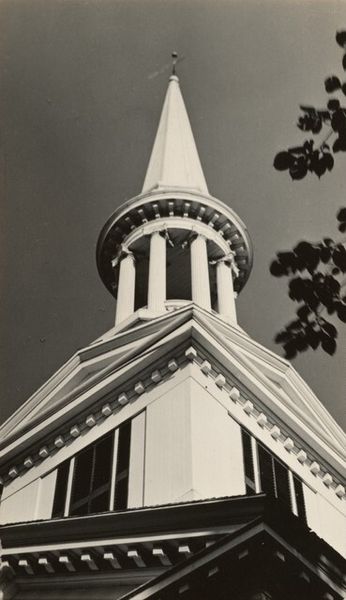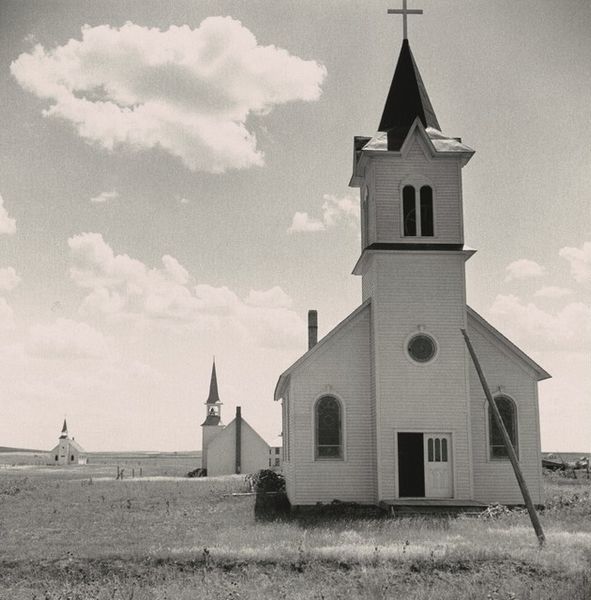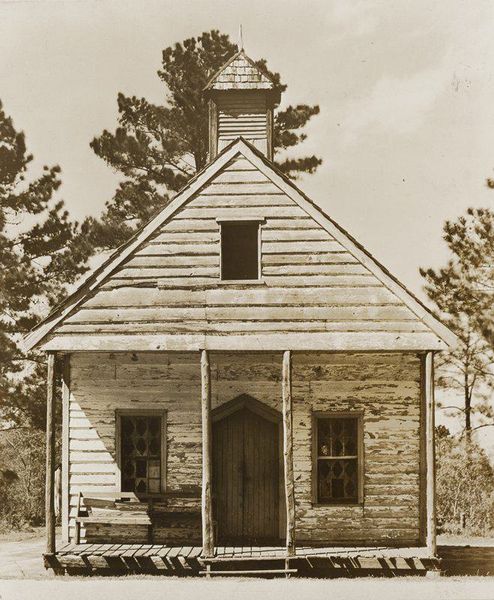
photography, site-specific, architecture
#
black and white photography
#
countryside
#
landscape
#
rural
#
black and white format
#
photography
#
black and white
#
site-specific
#
monochrome photography
#
monochrome
#
architecture
#
realism
#
monochrome
Dimensions: image: 21.5 × 16.4 cm (8 7/16 × 6 7/16 in.) sheet: 35.4 × 27.8 cm (13 15/16 × 10 15/16 in.)
Copyright: National Gallery of Art: CC0 1.0
Editor: Here we have Robert Adams’s "Catholic church, summer, Ramah, Colorado," a black and white photograph, likely taken between 1965 and 1981. It's so stark, almost aggressively simple. What do you see when you look at this? Curator: Well, immediately I consider the materiality of this image. Adams worked within a very specific tradition of American landscape photography, one deeply intertwined with the social and economic realities of the time. Editor: How so? Curator: The starkness you noted isn't just aesthetic. Consider the processes of its production – the chemicals, the paper, the labor involved in developing the image. The choice to shoot in black and white, a decision often linked to ideas of authenticity, also served a practical, economic function. Colour was costly and perhaps outside of immediate reach. What choices and limitations do you think impacted this photograph? Editor: So, the limitations became the style? I guess the availability of resources would deeply affect artistic output. Was Adams commenting on consumerism here? Curator: Perhaps not directly critiquing consumption. However, by meticulously documenting this everyday rural landscape, Adams draws our attention to the processes of land use and development inherent in a society rapidly embracing suburban sprawl. How might the church, as a structure built through specific labor and material choices, participate in those systems? Editor: I see it now. It's not *just* a church; it’s a building, made with specific materials and constructed through labor, placed within a particular social context that shaped not only the image itself, but also the place it depicts. Curator: Precisely. Looking at the materials, the processes, and the context can reveal so much about a seemingly simple photograph. Editor: I’ll never look at a black and white photo the same way again. Thanks for expanding my view.
Comments
No comments
Be the first to comment and join the conversation on the ultimate creative platform.
